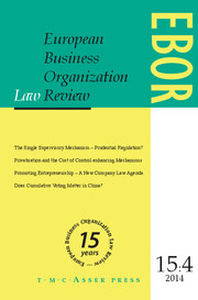Article contents
The New Business Entities in Evolutionary Perspective
Published online by Cambridge University Press: 19 April 2007
Abstract
The many legal forms for business organisations that first appeared in the United States during the last thirty years – the limited liability company (LLC), the limited liability partnership (LLP), the limited liability limited partnership (LLLP) and the statutory business trust – all combine the pattern of creditors' rights, or asset partitioning, that is traditional to the business organisation with the freedom of contract among investors and managers that is traditional to the partnership. To view these new entities as partnership-like is to treat the degree of freedom of contract as the essential difference between the traditional corporation and partnership forms; to view them as corporation-like is to treat the pattern of creditors' rights as the essential difference. While recent scholarship often takes the former view, the latter seems more accurate. History shows that much of the contractual inflexibility in the traditional corporation served merely to buttress its pattern of creditors' rights and that this inflexibility fell away upon the development of substitute sources of investor protection. The new forms are thus better understood as part of the continuing development of the corporate form rather than as entities more akin to the traditional partnership, which has in fact been evolving in a different direction. This article first develops this argument in terms of the trade-off between contractual freedom and the form of asset partitioning that to date has received the most scholarly attention, that is, limited liability. It then explores the evolution of the new forms from a less familiar perspective, focusing on the entity shielding component of asset partitioning.
Keywords
- Type
- Articles
- Information
- Copyright
- T.M.C. Asser Press 2007
- 4
- Cited by


